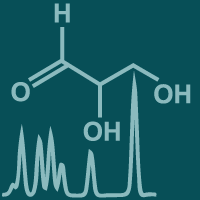Topic Menu
► Topic MenuTopic Editors



Novel Therapeutic Nutrient Molecules
Topic Information
Dear Colleagues,
This Topic Issue entitled “Novel Therapeutic Nutrient Molecules” will focus on the protective role of bioactive nutrient molecules as a therapeutic approach and against disease pathogenesis.
The identification of novel nutrient molecules for therapeutics or to prevent disease pathogenesis has been an attractive approach due to the ease of their translation to the general population. Recent advances in bioactive nutrient molecules protecting against human health outcomes has always been a growing field with new knowledge.
Our Topic Issue will consider original articles, commentaries, and review articles that focus on the following potential topics (but not limited to these):
- Investigations related to the nutrients of foods and their effects in improving human health.
- Investigations related to novel nutrient compounds and their impact on the human gut microbiome and gut health.
- Investigations related to the gut bioactive metabolites of nutrient molecules and their impact on human health.
- The novel protective roles of vitamins and their metabolites against adverse health outcomes.
Dr. Sathish Kumar Natarajan
Dr. Jiujiu Yu
Dr. Corrine K Hanson
Topic Editors
Keywords
- bioactive nutrients
- plant-derived exosome like nano particles
- extracellular vesicles
- gut microbial metabolites
- gut-derived metabolites
- nutrient signaling
- phytochemicals
Participating Journals
| Journal Name | Impact Factor | CiteScore | Launched Year | First Decision (median) | APC |
|---|---|---|---|---|---|

Biomedicines
|
4.7 | 3.7 | 2013 | 15.4 Days | CHF 2600 |

Current Issues in Molecular Biology
|
3.1 | 2.4 | 1999 | 13.5 Days | CHF 2200 |

Reports
|
0.9 | - | 2018 | 20.6 Days | CHF 1400 |

Nutrients
|
5.9 | 9.0 | 2009 | 14.5 Days | CHF 2900 |

Metabolites
|
4.1 | 5.3 | 2011 | 13.2 Days | CHF 2700 |

MDPI Topics is cooperating with Preprints.org and has built a direct connection between MDPI journals and Preprints.org. Authors are encouraged to enjoy the benefits by posting a preprint at Preprints.org prior to publication:
- Immediately share your ideas ahead of publication and establish your research priority;
- Protect your idea from being stolen with this time-stamped preprint article;
- Enhance the exposure and impact of your research;
- Receive feedback from your peers in advance;
- Have it indexed in Web of Science (Preprint Citation Index), Google Scholar, Crossref, SHARE, PrePubMed, Scilit and Europe PMC.
Related Topic
- Novel Therapeutic Nutrient Molecules, 2nd Volume (2 articles)

